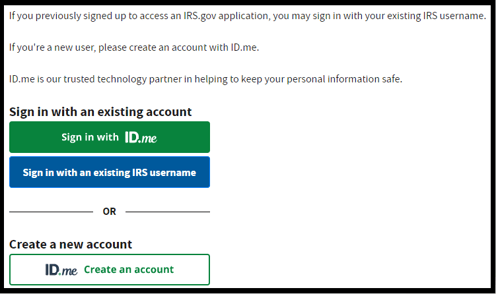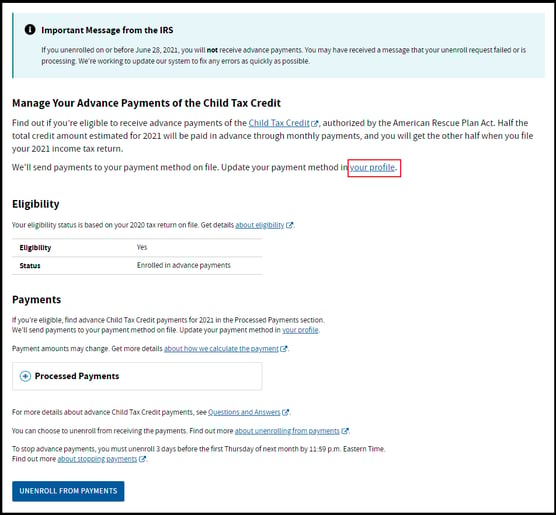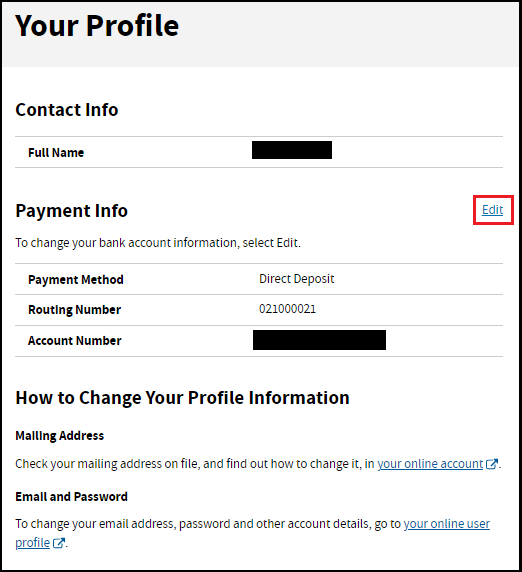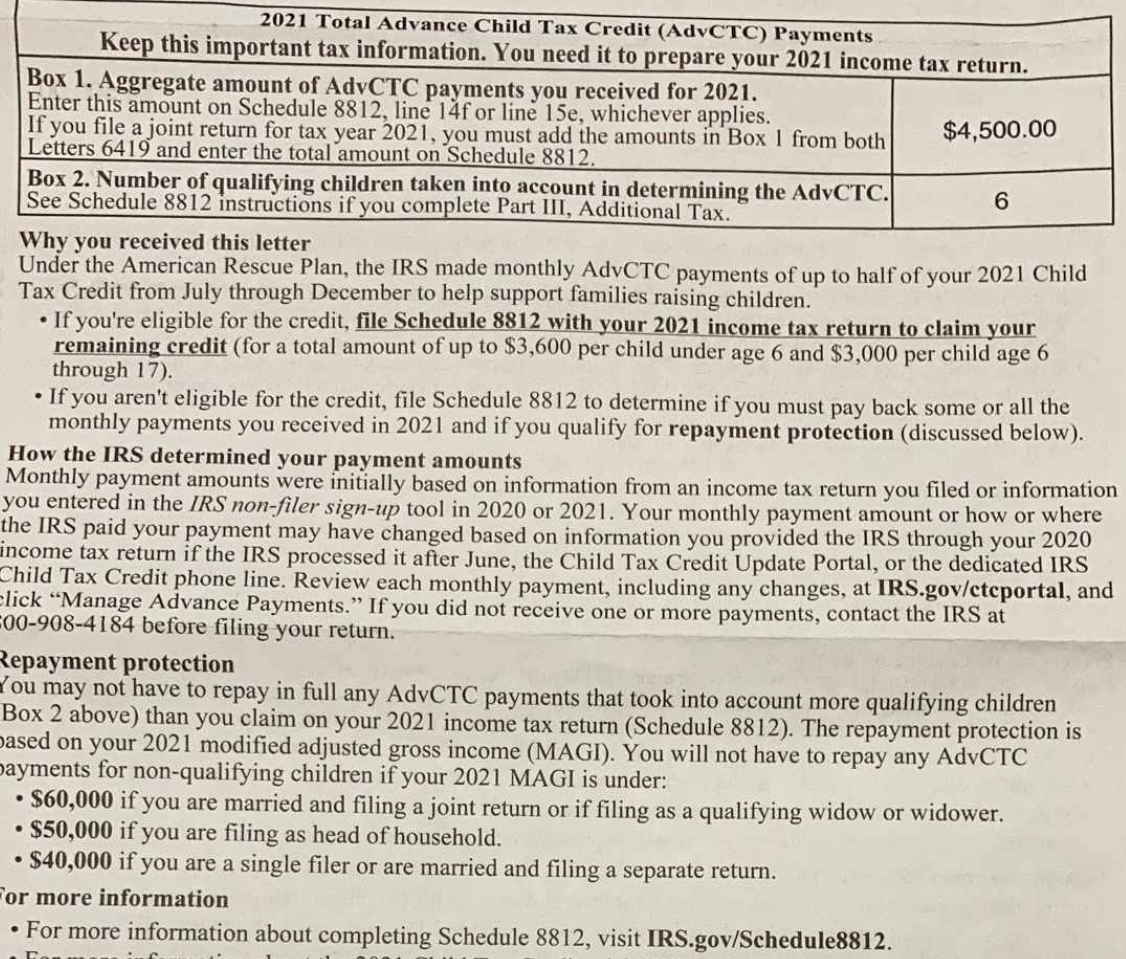.jpg)
New Child Tax Credit Monthly Advance Payments.
The IRS announced that the Child Tax Credit Advance that passed as part of ARPA would start on July 15th.
🟣 More details about the program
🟣 Special portal by the IRS is now live
🟣 Year-end update: IRS Letter 6419
TL;DR - How the program works;
- The payments are sent on the 15th of each month unless the 15th falls on a weekend or holiday.
- The payment was already processed for July and August and will continue until December 15th.
- If the IRS has your bank information on file, you'll get the money via direct deposit. Otherwise, you'll be getting the payment via check or debit card.
- $300 per month per child under the age of 6 and $250 per month per child between ages 6 to 17.
- The credit will also include children who turn 17 in 2021.
- The IRS launched a portal where you can update your information.
More details about the program;
- The full credit is available to married couples filing jointly with adjusted gross income less than $150,000, or $112,500 for head of household.
- The Child Tax Credit Expansion is only for 2021.
- The IRS is determining eligibility and calculating the amount of the advance payment based on your 2020 tax return. If a 2020 tax return has not yet been filed, it will be based on your 2019 tax return.
- Unlike the stimulus, the IRS will get the money back if you made too much money when you file your 2021 tax return.
- The regular Child Tax Credit will still phase out after $400,000 for MFJ
- US Citizens living abroad are not eligible for the expanded Child Tax Credit.
- The full value of the credit is $3,600 for children under age 6 before the end of 2021 and $3,000 for children between the ages 6-17.
- If you are not required to file a 2020 tax return and don't plan to you can apply for the advanced child tax credit here.
🖥️ The IRS portal is now live!
To create a portal, you will need to take the following steps:
- Using the link above, click on the "Manage Advance Payments" button.
- If you have an existing IRS.gov or ID.me account, you can sign up with your existing credentials.
- If you don't have an account, click on Create an account. See the screenshot below. Note: you will need to have a photo ID ready, as well as a camera on the device from which you are applying, as they will verify your identity with a video selfie.

- Follow the prompts to create your ID.me account. They will use 2-factor authentication to secure your account.
-
- View your eligibility.
- View your advance payments.
- Unenroll from payments - Opt-out of getting the Advanced Child Tax Credit and claim a bigger refund at the end of the year. If you opt-out of the advance, you are still eligible to claim this credit on your 2021 tax return. Note: To opt-out, you will need to unenroll 3 days before the first Thursday of next month. You don't need to unenroll each month.
- Update your address
- Provide or update your bank account information for monthly payments they’ll send beginning in August.
- Click on the link to "your profile" then in the "payment info" section, click "edit", enter your direct deposit information, and click "submit payment info". See screenshots below.


However, at this time, you can not do the following although, the IRS is planning to add this feature late in the summer.
- Update your income
- Report a change in marital status
- Add or remove the number of qualifying children
🧰 Troubleshooting steps if you did not receive your advance child tax credit
- Check your bank account and look for a deposit labeled CHILDCTC.
- Make sure your banking information is up to date. You should use the IRS online update portal to make changes to your direct deposit information.
- If you don’t have direct deposit, check which address the payment was sent to. If you need to update your mailing address, you won’t be able to do it through the portal yet, although the IRS is planning to add that functionality.
- If you're a victim of tax-related identity theft, you won't receive child tax credit payments until the issues have been resolved with the IRS. If the issues aren't cleared up this year while early payments are disbursed, you'll get the full amount when you file taxes in 2022. And keep in mind that even if you have unpaid state or federal debt, you should still receive child tax credit payments if you're eligible.
- If everything seems fine and you are eligible, The IRS offers a payment trace. You will need to fax or mail form 3911 to the tax agency. Your payment will be traceable if it has been at least five days since the deposit date and the bank hasn’t received the money or four weeks since a check has been mailed.
|
Note of caution! You might be in for a surprise if you don't update your information.
While the IRS is using older income information to deliver the monthly payments, the credit owed is ultimately determined by 2021 income and will have to be reconciled on next year’s tax return. That means individuals who got a new job or received a raise in 2021 may find themselves owing money to the government if their monthly payment was too high.
You might also receive too much in monthly payments if you have a child who is no longer considered a dependent in 2021 but was accurately claimed on the 2019 or 2020 tax return.
(Although, the March law offers some repayment protection in those cases for lower-income households.) |
IRS Updates for August 13 (2nd) Payment
- Some recipients who received direct deposits in July will receive the August payments by mail. Due to an issue expected to be resolved by the September payments, a percentage of these recipients – less than 15%.
- Families who did not get a July payment and are getting their first monthly payment in August will still receive their total advance payment for the year. This means that the total payment will be spread over five months, rather than six, making each monthly payment larger. For these families, each payment is up to $360 per month for each child under age 6 and up to $300 per month for each child ages 6 through 17.
- Additionally, the IRS is correcting an issue regarding the advance CTC payments for families where the parent(s) have an Individual Taxpayer Identification Number (ITIN) and the qualifying children have a Social Security number. Such families who did not receive a July payment are receiving a monthly payment in August, which also includes a portion of the July payment. They will receive the remainder of the July payment in late August.
- Read the full news release here
Year-end update: IRS Letter 6419:
As you gather your tax documents this year, you’ll want to keep an eye out for IRS Letter 6419. The IRS plans to send this important notice in late January to those who received advance Child Tax Credit payments in 2021.
The details in the document will not only help you report your advance payments correctly—it will also help you claim the other half of your Child Tax Credit. Additionally, relying on the amounts in the letter can help you avoid delays in processing your return and sending your refund.
We strongly encourage you to reference IRS letter 6419 before you file your taxes. Using incorrect amounts on your return could trigger a manual review of your return, which could delay your return—and refund for weeks.
Referencing your bank statements may not be the best route. In some cases, amounts may have been adjusted due do a variety of reasons, including if the processing of a 2020 return after an initial advance CTC payment was made. Or, the amounts may have changed from one payment to the next as you made changes in the IRS Child Tax Credit portal.
Note: Look out for 2 letters, as the IRS is sending separate letters for taxpayer and spouse and each letter only contains half of the CTC received.
Alternatively, if you do not receive the IRS Letter 6419, you can log in to your IRS portal to check the amounts you received. (See instructions in this post on how to create an online account with the IRS)
Here is how the notice looks:

Do you have anything to add? Do you have any follow-up questions? Please post below.
You can also read more from the IRS here. You may also check out the IRS FAQ page on this topic here.
🔊 For a podcast version of this article in Yiddish click here.